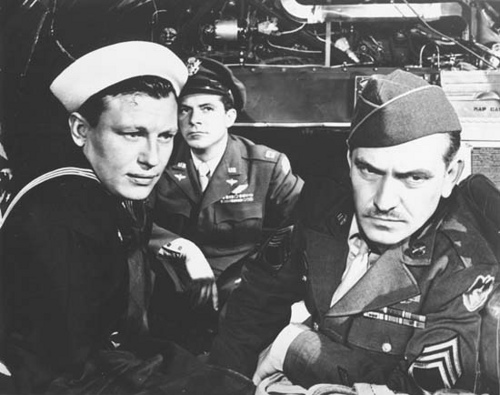
Bogart and Bacall together. Uploaded by doctormacro1.info.
Humphrey Bogart had a decade of acting in Hollywood before he got his statuette. No, I don’t mean Oscar – I’m talking about the Maltese Falcon. After performing mostly supporting parts in 40 films over 11 years, Bogart’s true breakthrough role came in1941 after George Raft turned down the role of Sam Spade.
Then the following year – Casablanca. Movie magic. Bogart was nominated for Best Actor, but lost to some guy named Paul Lukas for a movie called Watch on the Rhine. Yeah, whatever. Still, Bogart was established as an A-list star, and the roles offered by the studio improved significantly.

Doesn't he make you want to wear a hat? Uploaded to Photobucket by PandaPaw08.
And you can’t remember Bogart without discussing Lauren Bacall. They met during the production of To Have and Have Not in 1944 when she was just 19 and he was a married man of 45. Their relationship grew during the making of their second film together, The Big Sleep. After his divorce, the couple was married in 1945 and remained in love until Bogart’s premature death from cancer at age 57.
If you enjoy old movies, you’ll recognize this roster of excellent films Bogie made. The Big Sleep…The Treasure of the Sierra Madre…Key Largo…The African Queen (for which he finally won that Oscar)…and my favorite, The Caine Mutiny. Bogart’s portrayal of Captain Queeg as a paranoid, unstable and unsympathetic man is one of the wonderful performances of any era.
Today’s video highlights the climactic scene in The Caine Mutiny when Bogart displays Queeg’s madness with exquisite subtlety:

















